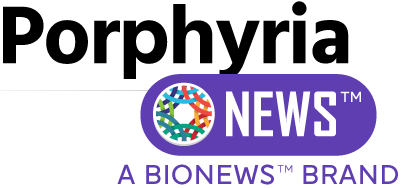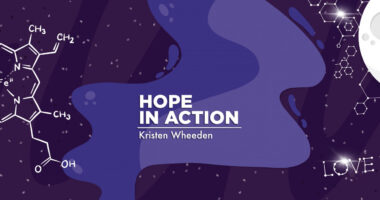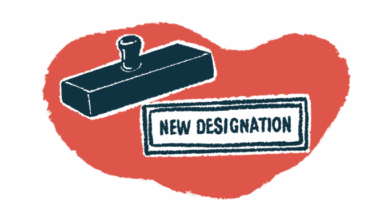Panhematin Less Costly Treatment Option for AIP Patients in US, Study Finds

Treatment with Panhematin (hemin for injection) is associated with a 78% lower average annual total cost of care compared with Givlaari (givosiran) in people with acute intermittent porphyria (AIP) in the U.S., a study reports.
Panhematin-associated cost savings were greatest for AIP patients with one acute attack a year who were not on preventive (prophylactic) treatment, reaching a 92% reduction in healthcare costs (by $545,219) compared with Givlaari.
However, these cost differences diminished in the context of preventive treatment for patients with multiple attacks each year.
The study, “Cost savings with hemin versus givosiran for the treatment of patients with acute intermittent porphyria (AIP),” was published in the Journal of Medical Economics. It was funded by Recordati Rare Diseases, which developed and markets Panhematin.
AIP, the most common form of acute hepatic porphyria (AHP), is a genetic metabolic disorder characterized by a deficiency of hydroxymethylbilane synthase, an enzyme involved in the production of heme — the molecule inside red blood cells that binds and carries oxygen throughout the body.
People with AIP experience acute attacks — which vary in severity and include abdominal pain, nausea, vomiting, and constipation — often leading to hospitalizations or emergency room visits. It is estimated that 3% to 5% of these patients have recurrent, severe attacks.
Panhematin is an approved intravenous (directly to the bloodstream) infusion therapy for recurrent attacks of AIP, often associated with the menstrual cycle in women when carbohydrate therapy is ineffective.
However, it is also often administered as a prophylactic, off-label treatment, which has been associated with lower acute attacks rates and lower healthcare resource use. Panhematin involves an infusion of at least 30 minutes per day during an acute attack, and weekly to monthly infusions when given preventively.
Alnylam Pharmaceuticals’ Givlaari, given as a monthly under-the-skin injection, was approved in the U.S. in November 2019 to treat adults with AHP.
The approval was based on positive data from the Phase 3 ENVISION study (NCT03338816), showing a 74% reduction in patients’ annual attack rate compared with a placebo. Notably, patients on Givlaari can also use Panhematin to treat acute attacks.
While previous studies have assessed the annual mean costs of treating AIP patients with Panhematin, estimates comparing the total cost of AIP-related care with Givlaari or Panhematin are lacking in the U.S.
Researchers at Recordati Rare Diseases, Stratevi and Wake Forest Baptist Health set out to fill this gap by using Panhematin’s 2017 shipment data, before ENVISION’s enrollment.
The shipment data, including information about the facility, provider location, shipping date, number of vials, returns, and patient’s year of birth and sex, were used to determine individual patient utilization (acute or prophylactic treatment) and estimate Panhematin’s annual costs.
The analysis, funded by Recordati, identified 490 AIP patients treated with Panhematin — 427 for acute attacks and 63 as prophylaxis. Of those with acute attacks, 238 (56%) were classified as having one attack per year, and 189 (44%) as having multiple attacks per year.
To simulate Givlaari’s annual costs, the team considered that Givlaari-treated patients would have 70% fewer annual attacks than those on Panhematin for acute attacks, based on trial results. Costs of other healthcare utilization were also considered for both treatments.
The mean annual total cost of care with Panhematin ($134,798) was 78% lower than that with Givlaari ($616,911), with patients having a single annual attack showing the greatest economic benefit (92% lesser costs).
Cost-savings were smaller for patients with multiple attacks each year (73% cost reduction), and 46% lower for those assumed to be using Pahnematin as a prophylaxis than the average annual total care cost of Givlaari given each month.
Similar findings were obtained when considering the expected discounted annual cost of Givlaari ($442,000 per year, a 23% discount per vial). Effectiveness differences between the therapies did not largely affect the results, but weight-based number of Givlaari vials per dose had a significant influence on cost differences.
Notably, the mean cost of other healthcare services was lower for patients treated with Givlaari ($15,116) than for those on Panhematin ($28,329).
Overall, the additional cost of switching from Pahnematin to Givlaari was strongly influenced by attack rates, as patients with one annual attack would have an additional annual cost of $778,884, while those with multiple attacks would pay $124,153 more per year.
“While acute [Pahnematin] treatment may offer significant cost savings vs switching to [Givlaari], there is a trade-off that needs to be balanced in an expected higher attack rate,” the researchers wrote.
Still, data suggest that “solely receiving [Pahnematin] remains the less costly approach to treat AIP patients” in the U.S., they added, noting that “[p]harmaceutical treatment is the largest expenditure for AIP patients.”
This study, they also said, “provides information to help inform cost-benefit analyses and medical/economic decision making.”
Investigators included among their model’s limitations the fact that it did not account for the cost of complications related to infusion-site infections in Panhematin prophylaxis, side effects of either treatment, and an assumed equivalency between these treatments “in the absence of comparative data.”






